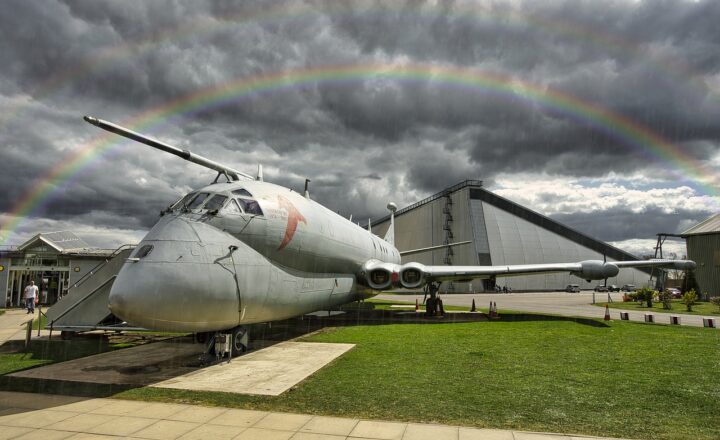The Role of Military Satellites in Guiding Troops and Gathering Intelligence
November 16, 2024

Military satellites have transformed the landscape of modern warfare, offering unparalleled capabilities in guiding troops and gathering intelligence. As technology has advanced, these satellites have become vital assets for military operations across the globe. This article explores the various roles that military satellites play, how they work, and their significance in contemporary conflict scenarios.
1. Understanding Military Satellites: An Overview
Military satellites are space-based assets utilized by armed forces for a variety of purposes, including communication, reconnaissance, navigation, and weather monitoring. They operate in different orbits, including low Earth orbit (LEO) and geostationary orbit (GEO), allowing them to cover vast areas of the Earth’s surface.
There are several types of military satellites, including:
- Communication Satellites: Facilitate secure communications among troops, command centers, and other military units, ensuring effective command and control in real-time.
- Reconnaissance Satellites: These satellites collect intelligence data through imaging and signals intelligence (SIGINT), providing crucial insight into enemy movements and locations.
- Navigation Satellites: Support precision navigation and timing (PNT) for military operations, enabling accurate troop movement and logistics support.
- Weather Satellites: Monitor atmospheric conditions to provide troops with necessary weather information that could impact operations on the ground.
Deepening our understanding of how these satellites function is essential to recognizing their strategic importance on the battlefield.
2. Guiding Troops: The Role of Military Satellites in Ground Operations
Military satellites play a vital role in ground operations, providing troops with critical situational awareness and guidance.
When deployed in conflict zones, soldiers rely heavily on data and information from military satellites for:
- Real-time Intelligence: Satellites gather and relay information about enemy positions, movements, and capabilities. This data allows commanders to make informed decisions on troop deployments and tactics, effectively minimizing risks and maximizing operational success.
- Tactical Navigation: Using satellite-based navigation systems, troops can navigate accurately in previously uncharted territories. GPS data derived from satellites enables on-the-ground units to coordinate strikes and troop movements with precision.
- Coordination of Air Support: Military satellites allow for seamless communication between ground forces and air units. This coordination is crucial for air support operations, ensuring that aerial forces can strike unintended targets and provide cover for troops on the ground.
The efficiency of ground operations significantly improves as satellite technology continues to evolve, leading to more effectiveness in modern combat missions.
3. Intelligence Gathering: The Power of Reconnaissance Satellites
Reconnaissance satellites are a cornerstone of military intelligence, equipped with sophisticated imaging sensors that capture high-resolution photographs of Earth’s surface. These images provide valuable insights into enemy activities, troop deployments, and infrastructure.
Some key functions of reconnaissance satellites include:
- Persistent Surveillance: Satellites can monitor specific locations for extended periods, gathering continuous intelligence on enemy activities without risking human lives.
- Signals Intelligence (SIGINT): By intercepting and analyzing electronic communications, reconnaissance satellites collect data on enemy plans and capabilities, adding another layer to situational awareness.
- Battle Damage Assessment (BDA): After an airstrike or military operation, reconnaissance satellites help assess the impact and effectiveness of the operations, providing information necessary for subsequent tactical decisions.
The strategic advantage presented by reconnaissance satellites has made them indispensable for military operations in the 21st century.
4. Enhancing Communication and Coordination
Effective communication is paramount for military operations, and satellites serve as a backbone for secure communication pathways. They enable timely and reliable information flow between different branches of the military, which is crucial for:
- Secure Messaging: Communication satellites provide secure channels for commanders to relay instructions to field units without risking interception by adversaries.
- Joint Operations Coordination: During joint operations involving multiple branches of the military and allied forces, satellites facilitate coordinated actions, allowing for synchronized movements and engagements.
- Crisis Management: In rapidly changing combat scenarios, timely communication through satellite systems allows military leaders to adapt and respond effectively to emerging threats or challenges on the battlefield.
Enhanced communication networks powered by military satellites have proven vital for mission success and the safety of military personnel.
5. The Future of Military Satellites: Innovations on the Horizon
As we look toward the future, innovations in satellite technology are poised to enhance military operations even further. Some anticipated advancements include:
- Miniaturized Satellites: Smaller, more efficient satellites that can be launched in constellations will provide enhanced coverage and capacity for data collection and communication.
- Artificial Intelligence Integration: Integration of AI into satellite systems will enhance data analysis capabilities, enabling quicker and more accurate decision-making processes in real-time.
- Inter-Satellite Links: Future satellites may feature direct communication links between satellites in orbit, enabling faster data relay and reducing dependency on ground stations, thereby increasing operational responsiveness.
These advancements promise to significantly improve the capabilities of military satellites, making them even more essential to modern warfare engagement and strategy.
Conclusion
Military satellites have become indispensable tools for contemporary military operations. Their roles in guiding troops, gathering intelligence, and enhancing communication capabilities highlight their significance in modern warfare. As technology continues to advance, the capabilities of military satellites will evolve, ensuring that they remain a critical asset in the arsenal of modern armed forces.
Understanding the intricacies of how these satellites function allows us to appreciate the importance of space-based assets in safeguarding national security and executing military strategies worldwide.








